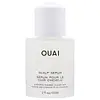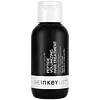What's inside
What's inside
 Key Ingredients
Key Ingredients

 Benefits
Benefits

 Concerns
Concerns

No concerns
 Ingredients Side-by-side
Ingredients Side-by-side

Water
Skin ConditioningPolysorbate 20
EmulsifyingButylene Glycol
HumectantGlycerin
HumectantPolyquaternium-7
Rhodiola Rosea Extract
EmollientSodium Hyaluronate
HumectantTocopheryl Acetate
AntioxidantAcetyl Tetrapeptide-3
Skin ProtectingTocopherol
AntioxidantRosa Centifolia Flower Extract
AstringentDextran
Trifolium Pratense Flower Extract
AstringentAcanthopanax Senticosus Root Extract
Skin ConditioningRhaponticum Carthamoides Root Extract
Skin ConditioningInonotus Obliquus Extract
Skin ConditioningSelaginella Lepidophylla Extract
EmollientEthylhexylglycerin
Skin ConditioningDisodium EDTA
Sodium Hydroxide
BufferingAcrylates/C10-30 Alkyl Acrylate Crosspolymer
Emulsion StabilisingCitric Acid
BufferingSodium Benzoate
MaskingPhenoxyethanol
PreservativeParfum
MaskingEugenol
PerfumingLimonene
PerfumingLinalool
PerfumingWater, Polysorbate 20, Butylene Glycol, Glycerin, Polyquaternium-7, Rhodiola Rosea Extract, Sodium Hyaluronate, Tocopheryl Acetate, Acetyl Tetrapeptide-3, Tocopherol, Rosa Centifolia Flower Extract, Dextran, Trifolium Pratense Flower Extract, Acanthopanax Senticosus Root Extract, Rhaponticum Carthamoides Root Extract, Inonotus Obliquus Extract, Selaginella Lepidophylla Extract, Ethylhexylglycerin, Disodium EDTA, Sodium Hydroxide, Acrylates/C10-30 Alkyl Acrylate Crosspolymer, Citric Acid, Sodium Benzoate, Phenoxyethanol, Parfum, Eugenol, Limonene, Linalool
Water
Skin ConditioningPisum Sativum Peptide
Skin ConditioningBetaine
HumectantGlycerin
HumectantPanthenol
Skin ConditioningPEG-40 Hydrogenated Castor Oil
EmulsifyingPhenoxyethanol
PreservativePolyquaternium-37
Citronellyl Methylcrotonate
MaskingEthylhexylglycerin
Skin ConditioningCeratonia Siliqua Seed Extract
Skin ConditioningHydrolyzed Soy Protein
HumectantZea Mays Starch
AbsorbentLeuconostoc/Radish Root Ferment Filtrate
AntimicrobialTrisodium Ethylenediamine Disuccinate
Polyquaternium-16
Potassium Sorbate
PreservativeSodium Benzoate
MaskingGuar Hydroxypropyltrimonium Chloride
Skin ConditioningPolyquaternium-7
Water, Pisum Sativum Peptide, Betaine, Glycerin, Panthenol, PEG-40 Hydrogenated Castor Oil, Phenoxyethanol, Polyquaternium-37, Citronellyl Methylcrotonate, Ethylhexylglycerin, Ceratonia Siliqua Seed Extract, Hydrolyzed Soy Protein, Zea Mays Starch, Leuconostoc/Radish Root Ferment Filtrate, Trisodium Ethylenediamine Disuccinate, Polyquaternium-16, Potassium Sorbate, Sodium Benzoate, Guar Hydroxypropyltrimonium Chloride, Polyquaternium-7
Ingredients Explained
These ingredients are found in both products.
Ingredients higher up in an ingredient list are typically present in a larger amount.
Ethylhexylglycerin (we can't pronounce this either) is commonly used as a preservative and skin softener. It is derived from glyceryl.
You might see Ethylhexylglycerin often paired with other preservatives such as phenoxyethanol. Ethylhexylglycerin has been found to increase the effectiveness of these other preservatives.
Glycerin is already naturally found in your skin. It helps moisturize and protect your skin.
A study from 2016 found glycerin to be more effective as a humectant than AHAs and hyaluronic acid.
As a humectant, it helps the skin stay hydrated by pulling moisture to your skin. The low molecular weight of glycerin allows it to pull moisture into the deeper layers of your skin.
Hydrated skin improves your skin barrier; Your skin barrier helps protect against irritants and bacteria.
Glycerin has also been found to have antimicrobial and antiviral properties. Due to these properties, glycerin is often used in wound and burn treatments.
In cosmetics, glycerin is usually derived from plants such as soybean or palm. However, it can also be sourced from animals, such as tallow or animal fat.
This ingredient is organic, colorless, odorless, and non-toxic.
Glycerin is the name for this ingredient in American English. British English uses Glycerol/Glycerine.
Learn more about GlycerinPhenoxyethanol is a preservative that has germicide, antimicrobial, and aromatic properties. Studies show that phenoxyethanol can prevent microbial growth. By itself, it has a scent that is similar to that of a rose.
It's often used in formulations along with Caprylyl Glycol to preserve the shelf life of products.
Polyquaternium-7 is a light to clear colored liquid. It is commonly found in haircare products for its film-forming and anti-static properties.
According to a manufacturer, it is a non-paraben and specially developed for negatively charged surfactant systems. This makes it a great hairstyle holder and helps to improve wet hair detangling without adding buildup.
Sodium Benzoate is a preservative. It's used in both cosmetic and food products to inhibit the growth of mold and bacteria. It is typically produced synthetically.
Both the US FDA and EU Health Committee have approved the use of sodium benzoate. In the US, levels of 0.1% (of the total product) are allowed.
Sodium benzoate works as a preservative by inhibiting the growth of bacteria inside of cells. It prevents the cell from fermenting a type of sugar using an enzyme called phosphofructokinase.
It is the salt of benzoic acid. Foods containing sodium benzoate include soda, salad dressings, condiments, fruit juices, wines, and snack foods.
Studies for using ascorbic acid and sodium benzoate in cosmetics are lacking, especially in skincare routines with multiple steps.
We always recommend speaking with a professional, such as a dermatologist, if you have any concerns.
Learn more about Sodium BenzoateWater. It's the most common cosmetic ingredient of all. You'll usually see it at the top of ingredient lists, meaning that it makes up the largest part of the product.
So why is it so popular? Water most often acts as a solvent - this means that it helps dissolve other ingredients into the formulation.
You'll also recognize water as that liquid we all need to stay alive. If you see this, drink a glass of water. Stay hydrated!
Learn more about Water